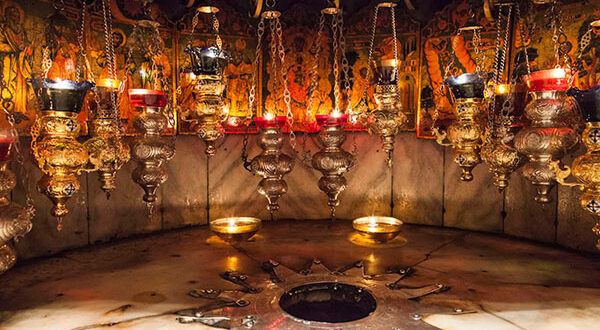In the life of every Christian, there are moments of deep longing to connect with the roots of our faith, to walk in the footsteps of Jesus Christ and His first disciples. In the midst of the noise and distractions of the modern world, pilgrimage to the Holy Land remains one of the most powerful and transformative spiritual experiences. It is an opportunity to step away from the everyday environment, to immerse oneself in the history of salvation, and to find, in the silence of sacred places, a personal renewal and a profound connection with God.
What Does It Mean to Pilgrimage to the Holy Land?
To pilgrimage, in its essence, is more than a physical journey. It is a spiritual journey that reflects the inner walk of every Christian towards an encounter with God. Since ancient times, pilgrims have left their homes in search of the sacred, and the Holy Land is undoubtedly the most iconic destination for followers of Christ. Located in present-day Israel and Palestine, this region is considered “the Fifth Gospel” because its lands and landscapes vividly narrate the story of the life, death, and resurrection of Jesus Christ. It is not just a place on the map; it is the stage for the central mystery of the Christian faith.
The pilgrimage to the Holy Land is not a new concept. After Jesus’ death and resurrection, early Christians began to travel to Jerusalem and its surroundings to visit the places mentioned in the Scriptures. Over the centuries, even amidst wars, conflicts, and political changes, Christians have continued to flock to these places with devotion. Today, this journey remains a desire for millions of people who seek a deeper encounter with the roots of their faith.
History and Biblical Significance of the Holy Land
From the Old Testament, this region has witnessed the relationship between God and His chosen people, Israel. Patriarchs like Abraham, Isaac, and Jacob walked these lands, and God’s promises echoed in the hills of Canaan. Here, Moses led the people of Israel toward the Promised Land, and the prophets proclaimed the coming of the Messiah.
But it is in the New Testament that the Holy Land takes on a central significance for Christians. In Nazareth, Mary’s “yes” to the angel changed the course of history, and in Bethlehem, in a humble cave, the Savior of the world was born. In the Jordan River, Jesus was baptized by John the Baptist, marking the beginning of His public ministry. The hills of Galilee saw His miracles and heard His parables, and Jerusalem was the scene of His passion, death, and glorious resurrection.
Every corner of the Holy Land is infused with the divine presence. Visiting these places is walking where Jesus walked, praying where He prayed, and suffering where He suffered. The geography becomes a living catechesis that allows the pilgrim not only to recall biblical events but also to make them present in their own life. As Saint John Paul II affirmed, “The Holy Land is the heart of Christianity.”
Theological Relevance of Pilgrimage
Pilgrimage to the Holy Land holds deep theological relevance because it allows for a tangible connection with the mysteries of faith. For Christians, the act of traveling to the holy places is not merely touristic; it is an encounter with the mystery of the Incarnation. The Christian faith is based on the belief that God became man, that He dwelled among us in a specific place and time. Walking through those same lands is a reminder that our faith is not an abstract idea but an embodied reality.
Moreover, pilgrimage reminds us that we are a people on a journey. In the spiritual life, we are all journeying toward the heavenly Jerusalem, toward our ultimate encounter with God. The pilgrim visiting the Holy Land experiences a foretaste of that final pilgrimage, learning to live more intensely their personal path of faith.
In the words of Benedict XVI, “Visiting the Holy Land means rediscovering the roots of the Christian faith.” It is an experience of conversion, of spiritual renewal, because it puts us in direct contact with the historical reality of salvation. It is not an escape from the present but a way to illuminate the present with the light of the history of salvation.
The Importance of Pilgrimage in Today’s World
In a world that seems increasingly uprooted and chaotic, pilgrimage to the Holy Land offers an opportunity to return to the origin, to reconnect with what truly matters. In the digital age, where information is consumed rapidly and where nuances and depth of experience are often lost, the pilgrim walking the dusty streets of Jerusalem or gazing at the Sea of Galilee rediscovers the beauty of simplicity and the power of the concrete.
Additionally, pilgrimage invites us to reflect on the current reality of Christians living in the Holy Land. In the context of political and religious tensions, it is crucial to remember that the Church in that region is a living community that continues to witness to the Gospel amidst difficulties. The Christians of the Holy Land, most of them descendants of the first followers of Christ, need our support and prayers. As pilgrims, we not only spiritually benefit from our visit but also have the responsibility to stand in solidarity with our brothers and sisters in faith.
How to Live a Transformative Pilgrimage
For a pilgrimage to the Holy Land to be a truly transformative experience, it is essential to approach it with the right spiritual disposition. Here are some practical tips:
- Spiritual preparation: Before leaving, dedicate time to prayer and studying the Scriptures. Read the biblical accounts of the places you will visit, meditate on their meaning, and ask God to prepare you for a deep encounter with Him. A pilgrimage is a grace that must be received with an open heart.
- Attitude of humility and gratitude: Pilgrimage is not a luxury trip but an experience of simplicity and reflection. Set aside tourist expectations and open your heart to what God wants to reveal to you. Every place, every encounter can be an occasion of grace if you remain receptive.
- Praying at holy sites: Take advantage of each sacred site for personal prayer. In Bethlehem, adore the Christ Child in the grotto where He was born. At the Holy Sepulchre, contemplate the mystery of the Resurrection and renew your faith in eternal life.
- Reflect on the mystery of the Incarnation: As you walk the streets of Nazareth or Jerusalem, remember that God became man for you, to redeem your life and that of all humanity. This thought should be present in every step you take.
- Connect with the local Church: Don’t forget that the Holy Land is also home to living Christian communities. Participate in Masses, converse with the locals, and learn about their testimony of faith. This will help you better understand the current reality of Christians in the Middle East.
Practical Applications: How to Integrate the Experience into Daily Life
After the profound experience of a pilgrimage to the Holy Land, the real challenge is integrating what you’ve learned into your daily life. Here are some ideas to bring the spirituality of the pilgrimage into your everyday routine:
- Live with greater awareness of God’s presence: Having walked through the holy places, remember that every corner of your life is also imbued with God’s presence. Find moments of prayer and reflection amidst daily tasks, and keep alive the awareness that God walks with you.
- Renew your love for Scripture: Having seen the places where biblical events occurred, reading the Scriptures takes on new depth. Make an effort to read the Bible regularly, meditating on the passages you experienced up close.
- Be a witness of faith: The pilgrimage to the Holy Land should lead us to be more fervent witnesses of the Gospel in our lives. Share what you have learned and experienced with others, not only in words but also through your actions, showing a renewed love for God and for others.
Conclusion
Pilgrimage to the Holy Land is a privilege, an experience that transcends time and space. It is a journey that takes the Christian to the heart of their faith, to the very places where God definitively revealed His love. But beyond the physical act of walking these lands, pilgrimage is an invitation to transform our hearts and our lives. It reminds us that, as Christians, we are always on a journey, seeking a deeper communion with God.
In a world that constantly distracts us from what is essential, pilgrimage to the Holy Land is a call to return to the roots, to remember what it means to be a follower of Christ. It is an experience that not only changes how we see the history of salvation but also invites us to live it more fully in our daily lives. Ultimately, it is an opportunity to rediscover the One who is the Way, the Truth, and the Life.







One comment
Pingback: Sacred Pilgrimages: Transformative Journeys of Faith – Dovebrothersquartet.com